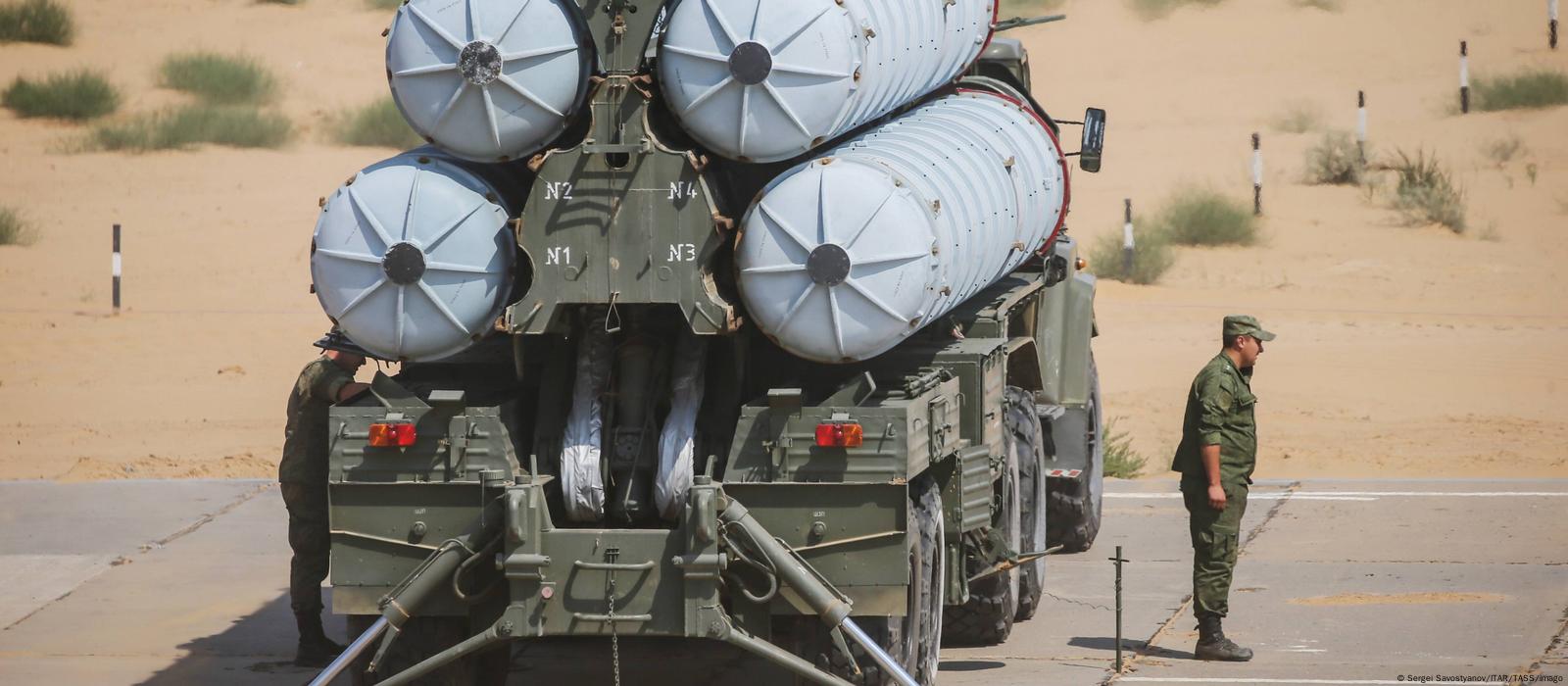Ukraine S 300 - "SA-10" redirects here. For the DEC computer interface, see System Concepts. For the Saturn launch vehicle, see AS-105. For other uses, see SA10 (disambiguation).
This article may need copy editing for grammar, style, consistency, intonation or spelling. You can help by editing. (April 2022) (Learn how and when to remove this template message)
Ukraine S 300

The S-300 (NATO reporting name SA-10 Grumble) is a series of long-range surface-to-air missile systems developed and operated by the former Soviet Union, currently used by Russia, Ukraine and the other former Eastern armies. block countries. Manufactured by NPO Almaz, based on the first version S-300P. The S-300 system was developed for the Soviet Air Defense Forces to defend against air attacks and cruise missiles. Later variations were also developed to be able to intercept ballistic missiles. The S-300 system was first implemented by the Soviet Armed Forces in 1979 and is designed for air defense of military bases and large industrial and administrative facilities and for airspace control against attack aircraft emi. During the Russian invasion of Ukraine in 2022, military analysts noted that Russia changed a number of ground attack systems.
Ukrainian Military In South Of Ukraine Deploy S 300 Air Defense System Received From Partners
The components can be close to the central command post or up to 40 km. Each radar provides target designation for the central command post. The command post compares data received from target radars at a distance of up to 80 km, filtering out false targets. The Ctral command center has two modes of active and passive target detection.
The developer of the project manager of the S-300 is Almaz-Antey. The S-300 uses missiles developed by the MKB "Fakel" and the NPO Novator design bureaus (separate government companies formerly called "OKB-2" and "OKB-8").
In 2006, the S-300 was still considered one of the most powerful anti-aircraft missile systems currently in use in the field.
It is used mainly in Asia and Eastern Europe, including NATO member countries Bulgaria and Greece. An improved version of the S-300 system is the S-400 (NATO reporting name SA-21 Growler), which entered service on April 28, 2007.
S 300 Missile System
Tests were completed in 1978 (for the S-300P variant), 1983 (for the S-300V) and 1987 (for the anti-ballistic capability of the S-300V).
Since then, several versions have emerged with different missiles, improved radars, better resistance to countermeasures, longer range and better capabilities against short-range ballistic missiles or targets flying at very low altitudes. There are currently three main variations.
The S-300PT (Russian С-300П, translated from the NATO report name SA-10A Grumble) is the original version of the S-300 system, which went into operation in 1978.

In 1987, more than 80 of these sites were active, mostly around Moscow. The suffix P stands for PVO-Strany (country air defense system). An S-300PT unit consists of a 36D6 [uk] surveillance radar (NATO reporting name Tin Shield), a 30N6 fire control system (FLAP LID) and 5P85-1 launch vehicles. The 5P85-1 vehicle is a semi-trailer truck. Usually a 76N6 low altitude detection radar (CLAM SHELL) is also part of the unit.
Slovakia Gives S 300 Air Defense System To Ukraine
The S-300PT included the use of an electronically scanned passive array radar and was capable of measuring multiple targets in a single fire control system. Because the original system was semi-mobile, it took more than an hour to set up for fire, and the hot missile launch system could burn the carrier launcher (TEL).
It was originally designed to use a follow-on missile guidance system (TVM). However, the TVM system had trouble tracking targets below 500m. To improve tracking of low-altitude targets, a command and steer system was added to guide the missile in the early part of the flight.
The improvements of the S-300P have resulted in several subversions for the domestic and export market. The S-300PT-1 (SA-10B) and S-300PT-1A (SA-10C) are a gradual upgrade of the original S-300PT system using a new 5V55KD missile and the cold launch method used later. The standby time was reduced to 30 minutes and the orbital optimizations allowed the 5V55KD to reach a range of 75 km.
The S-300PS/S-300PM (Russian С-300ПC/С-300ПМ, NATO reporting name SA-10D/E Grumble) was introduced in 1985 and is the only version considered to have a nuclear warhead . This model saw the introduction of modern TEL vehicles and mobile radar and command post, all based on the MAZ-7910 8×8 truck.
Belarus' Defence Ministry Says It Downed Ukrainian S 300 Missile
This model also included the new 5V55R missiles, which increased the maximum measurement range to 90 km (56 mi) and offered a guidance mode of semi-active radar homing (SARH). The surveillance radar of these systems was designated as 30N6. With this release, the distinction between self-propelled and towed TELs was also introduced. The TEL drawn is called 5P85T. The mobile TELs were 5P85S and 5P85D. The 5P85D was a "slave" TEL controlled by a 5P85S "master" TEL. The "Main" TEL is identifiable thanks to the large equipment container in the back of the cabinet; In "slave" TEL, this field is not closed and is used for the storage of cable or spare tires.
The next modernization, designated S-300PMU (Russian С-300ПМУ, US DoD designation SA-10F Grumble), was introduced for the export market in 1992 and included the updated 5V55U missile, which still uses the guidance method of terminal SARH intermediate and the smallest. head but increased the velope gagemt to give this missile roughly the same range and altitude capability as the more recent 48N6 missile (maximum range 150 km / 93 miles). The radars were also upgraded for the S-300PMU, designating the 64N6 (BIG BIRD) surveillance radar and the 30N6-1 illumination and guidance radar in the GRAU index.
The S-300PMU-1 (Russian: С-300ПМУ-1, US Department of Defense designation SA-20A, NATO reporting name SA-20 Gargoyle) was also first fielded in 1993 with the new and larger 48N6 missiles. . based system and brought all the same performance enhancements as the S300PM version, including increased speed, range, TVM guidance and ABM capability.

The warhead is slightly smaller than the marine version at 143 kg (315 lb). This release also saw the introduction of the new and more capable 30N6E TOMB STONE radar.
Slowakei Hat Ukraine S 300 Luftabwehrsystem übergeben
The S-300PMU-1 was first introduced in 1993 using different types of missiles in a single system. In addition to the 5V55R and 48N6E missiles, the S-300PMU-1 can use two new missiles, 9M96E1 and 9M96E2. Both are significantly smaller than previous missiles at 330 and 420 kg (730 and 930 lb) respectively, and carry a smaller 24 kg (53 lb) warhead. The 9M96E1 has a measurement range of 1-40 km (0.62-25 mi) and the 9M96E2 1-120 km (0.62-75 mi). They still carry 4 for TEL. Rather than relying solely on aerodynamic wings for maneuvering, they use a gas-dynamic system that allows them to have an excellent kill probability (P).
It is estimated at 0.7 for both missiles versus a tactical ballistic missile. The S-300PMU-1 typically uses the 83M6E command and control system, although it is also compatible with the older Baikal-1E and Sezh-M1E CCS. The 83M6E system includes the 64N6E (BIG BIRD) surveillance/detection radar. The control radar / lighting and fire guidance used is the 30N6E (1), optionally paired with the 76N6 low-altitude detective radar and the 96L6E all-altitude detective radar. The 83M6E command and control system can control up to 12 TELs, both 5P85SE self-propelled vehicles and 5P85TE towed launchers. General support vehicles are also included, such as the 40V6M towing vehicle designed to lift the antenna mast.
China has developed its own version of the S-300PMU-1, called the HQ-15. The missile was first mentioned in the Western think tank.
The S-300PMU-2 Favorit (Russian: С-300ПМУ-2 Фаворит, Ministry of Defense designation SA-20B), launched in 1997 (prepared in 1996), is one of the S-300PMU-1 with a range of 195. km (121 mi) with the introduction of the 48N6E2 missile. This system appears to be capable of not only short-range ballistic missiles, but also medium-range ballistic missiles. It uses the 83M6E2 command and control system, consisting of a 54K6E2 command post vehicle and a 64N6E2 surveillance/detection radar. Uses fire control/illumination radar and 30N6E2 guide. Like the S-300PMU-1, 12 TELs can be controlled with any mix of the 5P85SE2 and 5P85TE2 self-propelled launchers. Optionally, the 96L6E can use the full range radar and the 76N6 low altitude detection radar.
Guerre En Ukraine
The S-300F Fort (Russian С-300Ф Форт, Ministry of Defense designation SA-N-6, suffix F for Flot, for fleet in Russian) was introduced in 1984 as the original version of the ship ( navy) of the S- system 300P. From Altair, the range is extended to 7–90 km (4.3–56 mi; 3.8–49 nmi), with a maximum target speed of up to Mach 4, while the height of the gagemt reaches 25–25,000 m (82 -82). with the new missile 5V55RM fall, 021 ft). The Navy version uses the TOP SAIL or TOP STEER radar, TOP PAIR and 3R41 Volna (TOP DOME) and command guidance with a SARH mod terminal. Its initial installation and sea trials were carried out on a Terra-class cruiser, and it was also installed on Slava-class cruisers and Kirov-class battlecruisers. Eight (Slava) or twelve (Kirov) 8 missiles are stored under the deck in the rotary launcher. The export version of this system is known as Rif (Russian Риф - reef). The NATO name also used colloquially is "Grumble".
S-300FM Fort-M (Russian С-300ФМ, DoD designation SA-N-20) is another naval version of the system, which was installed exclusively on the Kirov-class cruiser Pyotr Velikiy, launched the new 48N6 missile . It was introduced in 1990 and is a
Dolphin s 300, new chrysler 300 s, ukraine s, 2020 300 s, has 300 s, mytee s 300, c 300 s 122, 2019 chrysler 300 s, ukraine s capital, 2019 300 s, 300 s, ukraine s got talent
0 Comments